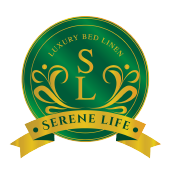Who knew that old practices would be the finest answer to the best beauty sleep in our modern age of night creams, serums, and moisturisers? Silk has been around since 3630 BCE China and is one of the most luxurious and desired fabrics around the world. Not only is it known for its elegance and sophistication, but its strong yet breathable and velvety soft material allows for effortless health care that takes effect while you sleep.
How is Silk Made?
While there are a large variety of different insects that produce silk, the domestic silkworm is the most common. Once the silkworms have grown to their full potential, they will start spinning their silk cocoons, which takes them around 3 to 8 days. When they are finished it is time to extract the silk threads by placing the cocoon in boiling water so that they soften. Each cocoon produces one single strand of silk measuring around 100 metres long, meaning it takes over 2,500 silkworms to produce only half a kilogram of raw silk. However, although silk is a luxurious and lightweight fibre, one thread of silk is stronger than a thread of steel of the same diameter.
From there the silk is cleaned with soap, dyed the colour of choice, and spun onto bobbins to prepare for the weaving process. The weaving processes is one of the final processes when the threads are woven together to create the final piece of fabric which is then given a finish.
What is Mulberry Silk?
Mulberry silk, put simply, is the highest quality silk available. Its different to normal silk because the eggs of the silkworm are placed onto mulberry leaves to ensure their diet only consists of mulberry as soon as they have hatched. This results in pure white coloured silk, that is more refined and uniform in texture than other types of silk, such as Habotai silk. Mulberry silk is also 100 per cent natural, odourless, and hypoallergenic.

